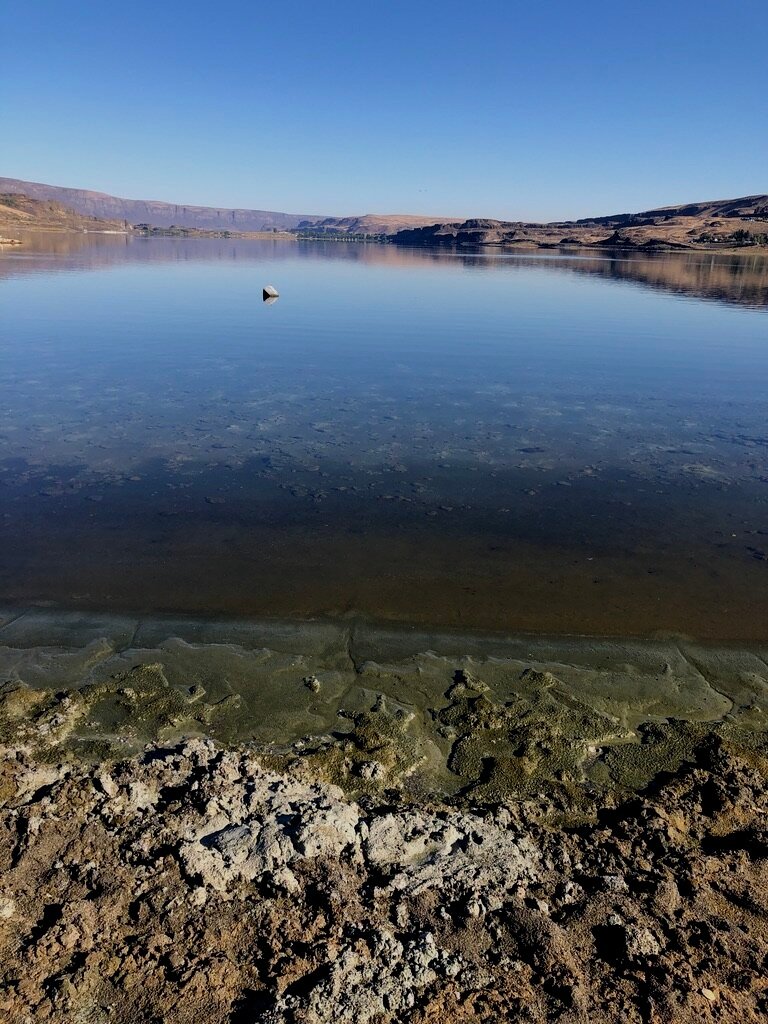
Research for Outstanding Resource Water (ORW) Application

OUTSTANDING RESOURCE WATER APPLICATION < link to application
Files are organized by originator
all links open in new tabs - links are underlined and in yellow
Department of Ecology’s April 2023 presentation slides about ORW
See where we are in the process - comment period ended September 27, 2023
View additional languages: Español | 中文 | Tiếng Việt | 한국어 | Русский | Yкраїнський
As a part of our organizations’ commitment to an ongoing process of protection for our unique mineral lake, the Confederated Tribes of the Colville Reservation (CTCR) and Soap Lake Conservancy have jointly submitted an application to the State of Washington for Tier 111b (Allows minor degradation below measurable levels, but extra requirements to control pollution) of the OUTSTANDING RESOURCE WATER Regulation/Rules.
Outstanding values of Soap Lake
• Mineral-rich water
• Two layers of water that do not mix
• Bacteria unique to Soap Lake
• Destination for the healing nature of water
CLICK ON IMAGE FOR DOCUMENT - IT WILL OPEN IN A NEW TAB
2002 - “Mormile, an environmental microbiologist and associate professor of biological sciences at UMR, worked to establish a Microbial Observatory in Soap Lake, Wash., to study the unique community of life forms found throughout the stratified lake’s water column, including its dense lower layer. The Soap Lake Microbial Observatory project is funded through an $840,000 grant from the National Science Foundation.” University of Missouri
BUREAU OF RECLAMATION PAPERS
CLICK ON IMAGE FOR DOCUMENT - IT WILL OPEN IN A NEW TAB
OTHER WASHINGTON STATE AGENCIES
CLICK ON IMAGE FOR DOCUMENT - IT WILL OPEN IN A NEW TAB
1999 - Five lakes in the Sun Lakes area of eastern Washington – Deep, Park, Blue, Alkali, and Lenore – were studied to evaluate their trophic status and the impacts of pollutant sources in the watershed. (Note: mentions Soap Lake which was not included in the study.) - Washington State Department of Ecology
DEPARTMENT OF ENERGY
CLICK ON IMAGE FOR DOCUMENT - IT WILL OPEN IN A NEW TAB
January 2022 article
“Researchers with Montana State University have been awarded a series of grants totalling $6.4 million to identify ways algae can be used for biofuels and other products as it removes carbon dioxide from the air.
Montana State University collaborators at University of Toledo discovered a strain of algae in eastern Washington’s Soap Lake, which contains high levels of the mineral. Subsequent research showed that the lake's unique environment allows the algae to metabolise carbon dioxide very efficiently while reducing competition from other microbes. According to Fields, alkaline systems with high pH like the lake can produce some of the highest carbon dioxide utilisation rates in nature, which was one of the driving factors to investigate the microorganisms under these conditions.”
CITY OF SOAP LAKE DOCUMENTS
CLICK ON IMAGE FOR DOCUMENT - IT WILL OPEN IN A NEW TAB
COLUMBIA BASIN HERALD ARTICLES
CLICK ON IMAGE FOR DOCUMENT - IT WILL OPEN IN A NEW TAB
SOAP LAKE CONSERVANCY
CLICK ON IMAGE FOR DOCUMENT - IT WILL OPEN IN A NEW TAB
Other mineral lakes around the world - SLC’S LIST OF LAKES AROUND THE WORLD
Image: MAJOR SALINE LAKES ACROSS THE WORLD. SOURCE: WURTSBAUGH ET AL, 2017.
Saline lakes, also known as salt lakes, are landlocked bodies of water with a concentration of dissolved minerals several times higher than in freshwater lakes, sometimes even higher than in the ocean. The largest in the world is the Caspian Sea, but other well-known saline lakes include the Dead Sea and the Great Salt Lake. Two dozen of the world’s most important saline lakes are shown in Figure 1. The larger blue dots indicate those that formerly had a surface area larger than 250 square kilometers (larger than a circular lake about 18 miles across). Source: Nature Geoscience
2005 - Soap Lake’s unique mineral content makes it an irreplaceable [inter]national treasure. The loss of mineral content over the past 50 years is believed to exceed 60%. How we manage the remaining 40% will depends on the successful collaboration of scientific and public interest, coupled with enlightened ground water management policies.































